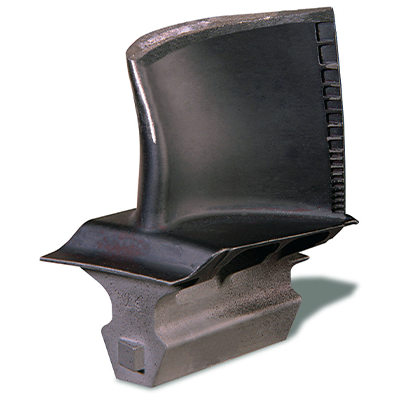Patented LPM® Powder Metallurgy delivers high-strength, crack-free superalloy repairs for gas turbine parts, without the distortion or heat-affected zone issues of welding.
Cracked or corroded gas turbine components can lead to costly replacements, long downtimes, and wasted material. Conventional welding and brazing often fall short—introducing distortion, heat-affected zone cracking, or limited repair depth.
Liburdi Powder Metallurgy (LPM®) offers a proven alternative. This patented, high-strength process restores nickel and cobalt superalloy parts by forming a dense, crack-free, metallurgical bond without distortion. LPM® extends repair capabilities beyond the limits of welding and brazing, structurally rebuilding cracks and worn areas up to 0.500 inches wide—over ten times what diffusion brazing can achieve.
With over 35 years of field-proven performance and FAA authorization, LPM® has been successfully applied across aeroderivative, heavy-duty frame, and aircraft engines. The process restores critical geometry, reinforces high-stress regions, and returns components to service with strength and reliability comparable to new material.The result—longer-lasting turbine parts, reduced replacement costs, and a sustainable, high-integrity alternative to conventional repair methods.

LPM® restores gas turbine blades that are cracked, oxidized, or worn beyond the limits of conventional welding or brazing. The process rebuilds high-stress regions such as blade tips and leading edges with fatigue-resistant, nickel- and cobalt-based alloys—providing superior oxidation and wear resistance for extended part life.

LPM® structurally rebuilds vanes and nozzles without distortion, ensuring precise fit-up and restored airflow geometry. Using advanced alloys such as MarM247, Liburdi reinforces trailing edges, vane throats, and abutment seal slots to OEM specifications for reliable, long-term service.
With over 35 years of field-proven success and FAA authorization, Liburdi Powder Metallurgy (LPM®) has restored thousands of turbine components across aircraft, aeroderivative, and industrial engines. The process continues to set the standard for high-strength, crack-free superalloy repairs that extend turbine part life and reduce operating costs.

Liburdi Powder Metallurgy (LPM®) allows for significantly larger and deeper repairs than conventional wide-gap brazing, restoring openings up to 0.500 inches compared to the typical 0.004 to 0.040 inches achievable with brazing. Damaged material and oxides are mechanically removed through precision grinding, ensuring a clean surface for strong metallurgical bonding without chemical cleaning.
LPM® alloys are applied as putty or tape depending on the repair geometry, allowing uniform build-up on eroded airfoils, vanes, and trailing edges. The process maintains excellent hot corrosion resistance and coating compatibility, even after multiple heat treatment cycles, making it a superior option for gas turbine superalloy repairs.
Unlike welding, LPM® repairs do not melt the base material, eliminating heat-affected zone (HAZ) cracking and distortion, particularly in crack-sensitive superalloys. The process uses matching or near-matching nickel and cobalt-based alloys to restore full structural integrity, often exceeding the strength of conventional weld fillers such as IN625.
LPM® is ideal for complex gas turbine components including vane trailing edges, seal slots, and abutment areas where weld repairs typically cause localized stress or misalignment. The result is a crack-free, dimensionally stable repair that maintains original geometry and ensures long-term reliability in demanding turbine environments.